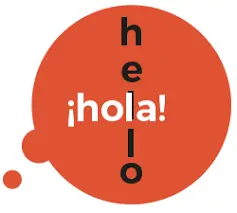If you are entering Spanish-speaking markets or supporting Spanish-speaking customers, Spanish translation services are no longer optional; they are central to growth. In the first hundred words, let us be direct. Pick your translation into Spanish services carefully. It affects clarity, speed of problem-solving, and the trust people place in your brand on day one. The best teams match how Spanish is actually used across countries, dialects, and channels, and they back it up with results you can measure, not just claims.
The global scale of Spanish you need to plan for
Headline numbers that shape your budget
Spanish speakers now exceed six hundred million worldwide, with about five hundred million native speakers according to the latest Instituto Cervantes yearbook. That is roughly seven and a half percent of the global population, which means Spanish is second only to Mandarin by native speakers and remains one of the most studied languages on earth.
Where Spanish is official and where it is influential
Spanish holds official status in twenty sovereign states across Latin America, Europe, and Africa, and is used in Puerto Rico as a principal language. Beyond those borders, it functions as a community or business language in parts of the United States, Andorra, Western Sahara, and the Philippines. Your rollout must reflect this mix of official and de facto presence.
The United States multiplier
The US Hispanic population reached about sixty-eight million in 2024 and represents roughly one in five residents, which explains why Spanish is the most spoken language after English in the country. For US programs, true coverage means Spanish first experiences in support, product education, and public information, not just translated brochures.

Spanish is not one market; it is many
Dialects and expectations
Mexican, Colombian, Rioplatense, Caribbean, and Peninsular varieties differ in vocabulary, register, and rhythm. Legal and healthcare content demands neutral, unambiguous Spanish, while marketing often performs better when it leans into regional voice. A good partner helps you choose when to standardize and when to localize by country or city.
Education and media effects
Spanish is a top language for international students and online consumption. The growth of Spanish in digital platforms and streaming has normalized subtitles, captions, and voice-over as first-class experiences rather than extras. Plan for text, audio, and on-screen text to travel together.
A practical scoring model for Spanish translation services
Accuracy and intent
Ask for domain-matched linguists and an editor-led review. Require terminology management for product names, legal clauses, and clinical phrases. Expect sample rewrites that show how nuance and tone are handled for your sector.
Coverage and formats
You will need translation for documents and interfaces, plus captions and subtitles for live and recorded content. Make sure the provider handles both real-time needs and post-production deliverables with the same glossary and style rules so your voice stays consistent.
Security and audit
Programs that touch patient data, contracts, or financial records require encrypted transport, authenticated access, and clear retention settings. Choose vendors who document these controls and can align with common US expectations for audits and discovery.
Measurable outcomes
Tie translation to conversions, resolution time, and error reduction. Track completion rates for Spanish language journeys and compare to your English flow. If results move in the right direction, keep scaling.
Country-by-country decisions that pay off
Mexico, Colombia, Spain, and beyond
The largest single market by population is Mexico, followed by Colombia, Spain, and Argentina. Each brings distinct regulatory and cultural signals. For example, banking and public services in Spain often require formal register and European terminology, while e-commerce in Mexico may prefer everyday vocabulary and mobile-first layouts. A smart plan starts with two or three priority markets and expands once the metrics hold.
United States Spanish at scale
In the US, Spanish content works best when it is authored as primary, not as a late translation. Pair Spanish web journeys with Spanish-speaking agents and Spanish captions on your webinar replays. That alignment shortens calls, lowers abandonment, and earns trust faster in regions where Spanish is part of daily life.
How TransLinguist fits into a results-first plan
What we emphasize
TransLinguist combines translator-led editing with speech technology and subtitling so written content, live interpreting, and on-demand media share the same terminology and style. That mix keeps meaning precise in legal and healthcare settings and keeps campaigns lively in marketing. When you need speed, our editorial teams review AI-assisted drafts before release, which protects intent while meeting timelines.
What you can expect
A single glossary that travels across your website, mobile app, support scripts, captions, and voice-over. Live coverage for events when you need Spanish interpreting or captions in the moment. Post-event deliverables that are clean enough to publish and searchable enough to reuse. That is how translate into Spanish stays tied to outcomes rather than isolated tasks.
A buying checklist you can copy into your RFP
People
Ask for named lead linguists per domain. Request a sample edit on your content that shows tone, terminology, and rewrite choices.
Process
Confirm how glossaries are created, updated, and enforced. Require double review for regulated content and a fast feedback loop for release notes and UI strings.
Product
List the formats you need. Web and app strings, PDFs, knowledge base articles, captions, subtitles, and voice-over. Insist that every format inherits the same terminology and style guide.
Proof
Measure conversion on Spanish landing pages, first contact resolution in support, and completion rates on Spanish onboarding. Keep what moves the numbers and retire what does not.
Conclusion
Spanish gives you access to hundreds of millions of potential customers in twenty countries and more in the United States. Treat it as foundational. Work with Spanish translation services that pair editorial excellence with secure, multi-format delivery, and evaluate them by outcomes that move the business, not by word counts.. If you want a partner that designs for impact from day one, TransLinguist is ready to help you build and prove the plan.
FAQs
How many people speak Spanish worldwide?
Recent reporting from Instituto Cervantes indicates that global Spanish speakers now exceed six hundred million, with about five hundred million native speakers. The share represents roughly seven and a half percent of the world population.
How many countries have Spanish as an official language?
Spanish is the official language in twenty sovereign states, with additional territories and communities where it functions as a primary language in daily life or government services.
Why does US Spanish matter if we already serve Latin America?
The US has around sixty-eight million Hispanics, and Spanish is the most used language after English. Spanish first support and learning content in the US can shift resolution time and satisfaction immediately.
Should we standardize Spanish or localize per country?
Standardize legal and safety content for clarity and localize marketing and support content where cultural cues drive engagement. Start with your top two markets and expand as results justify the spend.



